#gamedev writes
Text
Five Things You Never Get Tired of Writing
Tagged by @crescencestudio your answers were GOLD!!! now I gotta string some words together and hope they make sense lol 🤧
sibling relationships - I’m sorry, but as someone who is a sibling and grew UP with siblings, I can smell a fake interaction a mile away LOL. It’s always been a pet peeve of mine to read books or watch movies and it’s painfully obvious that the writer has no idea what a real sibling interaction looks like oh my goodness. So I’ve taken it upon myself to write good rep LOL and now it’s in everything I make.
teenagers! (the drama, the mundane, the absurd, all of it!!) - Teens can be terrifying, confusing, immature, a hassle, etc. etc. But I feel like on top of the general disrespect and neglect demonstrated, (American) society just doesn’t give a shit about its kids and not-quite-yet-adults?? And in many instances there’s this huge rush to for kids to grow up mature? It’s disgusting. YA as a genre is still ridiculed in a lot of spaces, there’s a serious decline in teen movies being made right now (though there’s a few that cropped up recently, that doesn’t account for how many more could be made), and I personally feel like there’s quite a few experiences I missed out on just for being a Black girl 🤷🏾♀️. I love this age group and writing about it because it’s a period of firsts: all the things and experiences that adults have already done or have no interest in revisiting are such a Big Deal for those 13-19 year olds in my opinion and it’s just fun.
high maintenance girlies aka “Why do you do the most???” 💅🏾 I actually read this more than I write it, but when I DO write it??? I feel so powerful lol. Maybe it’s cause most people in my real life see me one way, but 90% of the time I’m just harboring gremlin energy and I get a special vindication when I see women/girls/femme who are stubborn beyond belief, angry, or type A personalities. The problem is most people don’t like reading about these type of characters so most times I’m writing for myself aha...
dialogue (specifically conversations) - I love any kind of banter, I love goofy, random conversations, I love quoting cartoons and movies unironically, and I gobble that ish up when others do it!! I feel like you learn a lot of about characters through their dialogue, especially with what they don’t say sometimes.
grief - So I was running out of things for the list and decided to pull out my old wips and completed stuff, and this was a common thing that came up???? Like a lot of writers, I have to put the words to paper to process what’s going on, and the thing about grief is that you can process it all you want, but a lot of times it doesn’t make sense?? And it’s treated as something to ‘get over’ when the reality it grief this natural thing. And it doesn’t even have to be the physical death of a loved one (though it’s a thing I write about) but it can be the death of a situation, the end of a non-romantic relationship, whatever. It’s painful but I find myself exploring it anyway.
(tagging @tuffmallowinteractive @jaunefleurwrites @jelpiparade @robobarbie @lovebirdgames @velvetfoxgames @rieindiegames @twincovesgame but feel free to ignore!!)
8 notes
·
View notes
Text

When the date is going well.
🪳 Wishlist on Steam 🪳
#gamedev#pixelart#rpg#gaming#indiedev#pixel art#witchmarsh#platformer#screenshotsaturday#game writing
2K notes
·
View notes
Text
realities, maximalism,and the need for big book™️
some gubat banwa design thoughts vomit: since the beginning of its development i've kind of been enraptured with trying to really go for "fiction-first" storytelling because PbtA games really are peak roleplaying for me, but as i wrote and realized that a lot of "fiction first" doesn't work without a proper sort of fictional foundation that everyone agrees on. this is good: this is why there are grounding principles, genre pillars, and other such things in many PbtA games--to guide that.

broken worlds is one of my favs bc of sheer vibes
Gubat Banwa didn't have much in that sense: sure, I use wuxia and xianxia as kind of guideposts, but they're not foundational, they're not pillars of the kind of fiction Gubat Banwa wants to raise up. there wasn't a lot in the sense of genre emulation or in the sense of grounding principles because so much of Gubat Banwa is built on stuff most TTRPG players haven't heard about. hell, it's stuff squirreled away in still being researched academic and anthropological circles, and thanks to the violence of colonialism, even fellow filipinos and seasians don't know about them
this is what brought me back to my ancient hyperfixations, the worlds of Exalted, Glorantha, Artesia, Fading Suns... all of them have these huge tomes of books that existed to put down this vast sprawling fantasy world, right? on top of that are the D&D campaign settings, the Dark Suns and the Eberrons. they were preoccupied in putting down setting, giving ways for people to interact with the world, and making the world alive as much as possible.
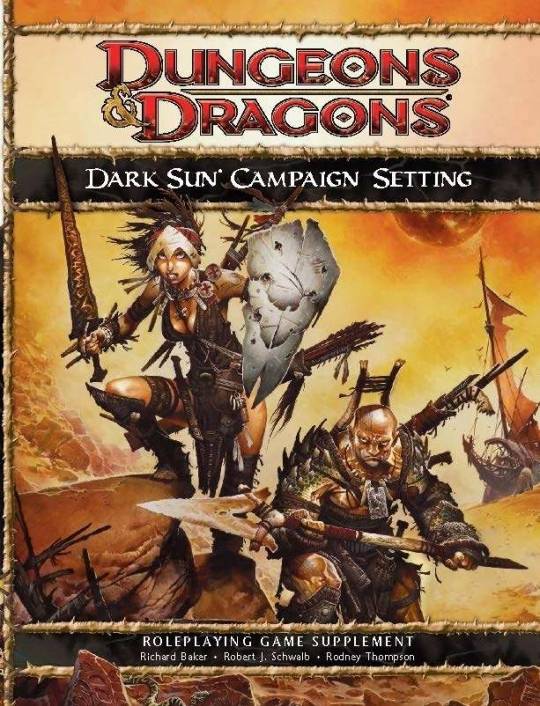



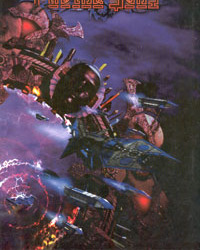
one of my main problems with gubat banwa was trying to convey this world that i've seen, glimpsed, dreamed of. this martial fantasy world of rajas and lakans, sailendras and tuns, satariyas and senapatis and panglimas and laksamanas and pandai... its a world that didn't really exist yet, and most references are steeped in either nationalism or lack of resources (slowly changing, now)

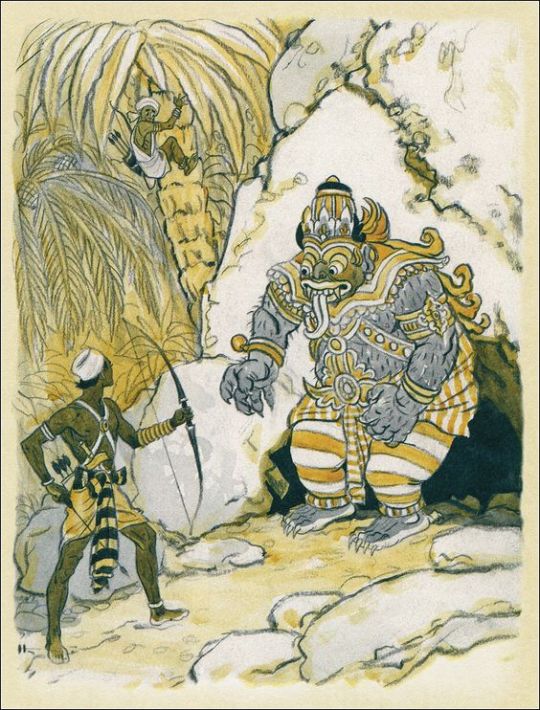
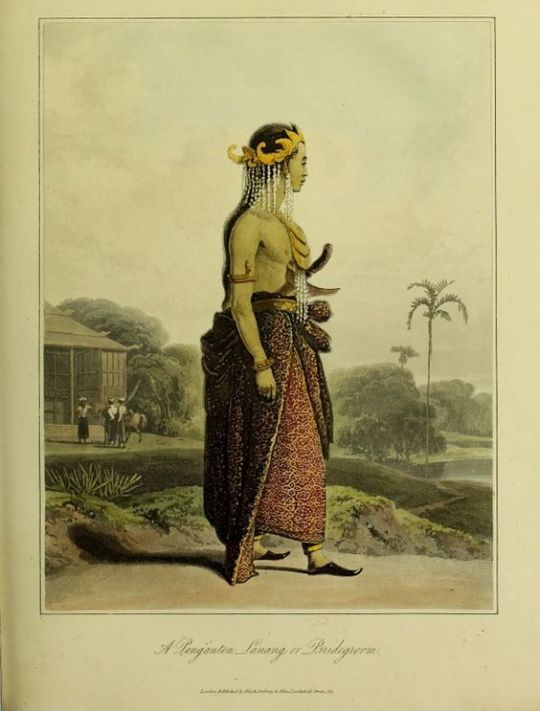
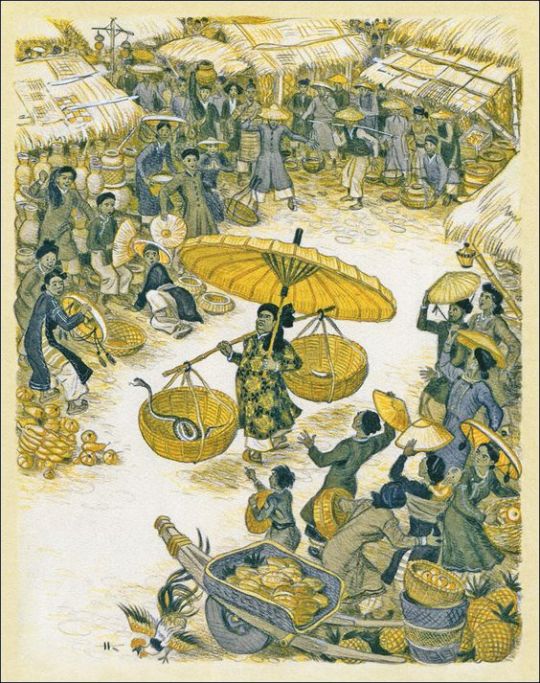
i didn't want to fall back into the whole gazeteer tourist kind of shit when it came to writing GB, but it necessitated that the primary guidelines of Gubat Banwa were set down. my approach to it was trying to instill every aspect of the text, from the systems to the fluff text to the way i wrote to the way things were phrased, with the essence of this world i'm trying to put forward. while i wrote GB mainly for me and fellow SEAsian people, economically my main market were those in the first world countries that could afford to buy the book. grokking the book was always going to be severely difficult for someone that didn't have similar cultures, or are uninterested in the complexities of human culture. thus why GB had to be a big book.
in contemporary indie ttrpg spaces (where I mostly float in, though i must admit i pay more attention to SEAsia spaces than the usual US spaces) the common opinion is that big books like Exalted 3e are old hat, or are somewhat inferior to games that can cram their text into short books. i used to be part of that camp--in capitalism, i never have enough time, after all. however, the books that do go big, that have no choice to go big, like Lancer RPG, Runequest, Mage, Exalted are usually the ones that have something really big it needs to tell you, and they might be able to perform the same amount of text-efficient bursting at the seams flavor writing but its still not enough.
thats what happened to GB, which I wanted to be, essentially, a PbtA+4e kind of experience, mechanically speaking. i very soon abandoned those titles when i delved deeper into research, incorporated actual 15th century divination tools in the mechanics, injected everything with Martial Arts flavor as we found our niche
all of this preamble to say that no matter how light i wanted to go with the game, i couldnt go too light or else people won't get it, or i might end up writing 1000 page long tome books explaining every detail of the setting so people get it right. this is why i went heavy on the vibes: its a ttrpg after all. its never gonna be finished.
i couldnt go too light because Gubat Banwa inherently exists on a different reality. think: to many 3 meals a day is the norm and the reality. you have to eat 3 meals a day to function properly. but this might just be a cultural norm of the majority culture, eventually co opted by capitalism to make it so that it can keep selling you things that are "breakfast food" or "dinner food" and whatnot. so its reality to some, while its not reality to others. of course, a lot of this reality-talk pertains mostly to social--there is often a singular shared physical reality we can usually experience*
Gubat Banwa has a different fabric of reality. it inherently has a different flow of things. water doesn't go down because of gravity, but because of the gods that make it move, for example. bad things happen to you because you weren't pious or you didn't do your rituals enough and now your whole community has to suffer. atoms aren't a thing in gb, thermodynamics isn't a real thing. the Laws of Gubat Banwa aren't these physical empirical things but these karmic consequent things
much of the fiction-first movement has a sort of "follow your common sense" mood to it. common sense (something also debatable among philosophers but i dont want to get into that) is mostly however tied to our physical and social realities. but GB is a fantasy world that inherently doesn't center those realities, it centers realities found in myth epics and folk tales and the margins of colonized "civilization", where lightnings can be summoned by oils and you will always get lost in the woods because you don't belong there.
so Gubat Banwa does almost triple duty: it must establish the world, it must establish the intended fiction that arises from that world, and then it must grant ways to enforce that fiction to retain immersion--these three are important to GB's game design because I believe that that game--if it is to not be a settler tourist bonanza--must force the player to contend with it and play with it within its own terms and its own rules. for SEAsians, there's not a lot of friction: we lived these terms and rules forever. don't whistle at night on a thursday, don't eat meat on Good Friday, clap your hands thrice after lighting an incense stick, don't make loud noise in the forests. we're born into that [social] reality
this is why fantasy is so important to me, it allows us to imagine a different reality. the reality (most of us) know right now (i say most of us because the reality in the provinces, the mountains, they're kinda different) is inherently informed by capitalist structures. many people that are angry at capitalist structures cannot fathom a world outside capitalist structures, there are even some leftists and communists that approach leftism and revolution through capitalism, which is inherently destructive (its what leads to reactionaries and liberalism after all). fantasy requires that you imagine something outside of right now. in essence read Ursula K Le Guin
i tweeted out recently that you could pretty easily play 15-16th century Luzon or Visayas with an OSR mechanic setting and William Henry Scott's BARANGAY: SIXTEENTH CENTURY PHILIPPINE CULTURE AND SOCIETY, and I think that's purely because barebones OSR mechanics stuff fits well with the raiding and adventuring that many did in 15-16th century Luzon/Visayas, but a lot of the mechanics wont be comign from OSR, but from Barangay, where you learn about the complicated marriage customs, the debt mechanics, the social classes and stratum...
so thats why GB needs to be a (relatively) big book, and why I can contend that some books need to be big as well--even if their mechanics are relatively easy and dont need more than that, the book, the game, might be trying to relay something even more, might be trying to convey something even more than that. artesia, for example, has its advancements inherently tied to its Tarot Cards, enforcing that the Arcana guides your destiny. runquest has its runes magic, mythras (which is kinda generic) has pretty specific kinds of magic systems that immediately inform the setting. this is why everything is informed by something (this is a common Buddhist principle, dependent arising). even the most generic D&D OSR game will have the trappings of the culture and norms of the one that wrote and worked on it. its written from their reality which might not necessarily be the one others experience. that's what lived experience is, after all
*live in the provinces for a while and you'll doubt this too!
385 notes
·
View notes
Note
shooting my shot with these questions -
how far along was the development of demo fury and how much work was scrapped or reworked into adversary/tower for the release game? :0c i think it's genius vot broken got swapped over to tower's route and we got stubborn instead, but i'm also burning with curiosity wondering how broken was originally going to function with demo fury
Pretty much 0 "hard" work had been done on demo Fury before she got scrapped. We had loose concepts for how we wanted the overall progression of the game to go, but those concepts had yet to face the crucible of writing vs the pleasant air conditioned room of the imagination.
As soon as we released the first demo for Slay the Princess, we spent 100% of our energy on finishing Episode 4 of Scarlet Hollow.
It wasn't until January of 2023 that we started work on the rest of Slay the Princess. A lot of the earliest stages work was spent on looooong runs on the elliptical, listening to music + thinking things through.
That ideation phase felt *really* stilted with the number of Princesses we had in the initial demo, especially for Princesses that had a lot of ways to unlock them, since the more ways you got to a Princess, the less it felt like her character had a real emotional core to latch onto.
So, using the example of the Fury... what is she?
She's someone way more powerful than you who mercilessly beats you to death.
But she's ALSO someone who you fought to a fatal standstill that ended with mutual respect.
And somehow at the same time she's also ALSO someone who hid a secret knife... somewhere... and killed you with it.
Like, who is that? It's nobody. Not really. And while we *could* have tackled this with entirely too much variable dialogue, at that point each of those Princesses felt like entirely different people, so what if we just... made them different Princesses?
That's what we did with demo 1 Fury, who became The Adversary, the Tower, AND the Razor.
Likewise, Damsel -> Damsel + Prisoner and Beast -> Witch + Beast
Since the original concept for "The Fury" was split into "The Adversary and "The Tower," we thought it would be fun to bring her back as the "fusion" Chapter 3 Princess that can be accessed for either of their routes.
And since we got into PAX Rising shortly after making this decision, it felt like a good idea to do a full re-release of the demo.
And outside of that... there's very little in the way of leftover first drafts or unused concepts, other than little figments that live in our heads. Slay the Princess had a *ridiculously fast* turnaround time (about 7 months of full time work from myself and Abby for the initial release, + ~3 months of extra full time work for the Pristine Cut.) This faster turnaround was intentional, both to minimize any drag on Scarlet Hollow's development, but also because the game itself is dreamlike by design, and free-running with ideas until they hit their logical ends felt like it worked extremely well with the story we were hoping to tell.
132 notes
·
View notes
Text
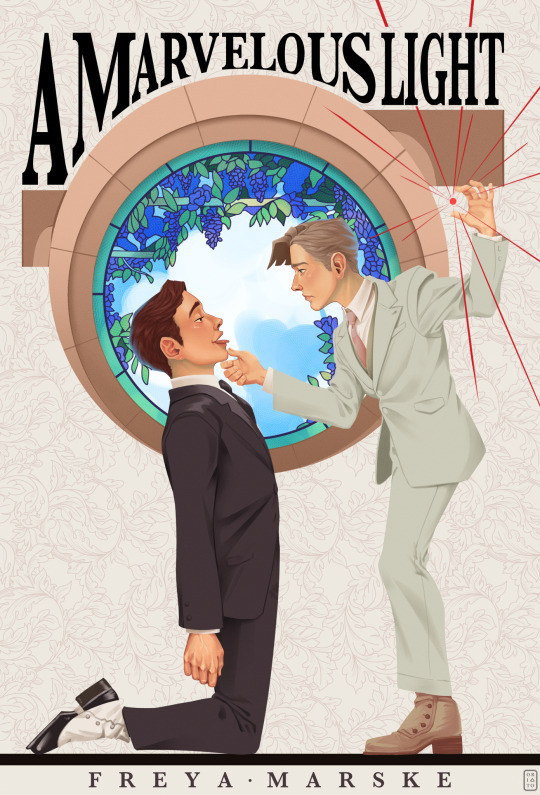
A great scene from A Marvelous Light ✨
#this took ages but im nothing if not a procrastinator!#a marvelous light#the last binding#i want to read the rest but i dont have the books yet 😭😭😭#edwin courcey#robin blyth#this painting was fun though#and i actually finished it which is a major score for me!#i only sketch and let paintings rot in my files these days loll#chalk it up to gamedeving and fanfic writing sapping my strength
184 notes
·
View notes
Text



save me, mean butch from my game... mean butch from my game, save me...
#vollema#wip#work in progress#oc#original character#gamedev#game dev#game development#she's fun to write dialogue for#ion (vollema)
131 notes
·
View notes
Text
All games ask “how can I reuse this asset? how might I trick the player into replaying this level or moving through this space again? It sure took a lot of work to make it.” When I played Armored Core 3 there was a mission to defend a rebel base from attacks on all sides and you have to rush around to manage all the enemies. A few missions later you’re hired by a corporation to put down a labor uprising. I loaded in and it immediately hits me where I am and how well I had learned the space. The corporations couldn’t beat you - so they hired you.
It stuck with me as the best recycling of a level asset since flipping the castle upside down in Castlevania. I hit my first mission in Armored Core 6 like this. It wasn’t the same reuse of an exact level that I was expecting but it was still exciting to be on both sides of the conflict. I love the mission structure of the armored core games because it led to this extremely creative solution for reusing maps and spaces.
388 notes
·
View notes
Text
[EN] Video Game Writing Resources!
Hello!
My name is Andrea--I have been writing for games since 2018, and even worked as a writer at Firaxis Games from 2022 until April of 2023.
So, I knew a few things about narrative design--but what the fuck is it?
Recently, I gave a talk about the fundamentals and history of the field of narrative design. In Spanish.
So, let's talk about it in English--the "what," "why," "how," "when," and "who," of narrative design!
What is narrative design?
Narrative design is not just writing--it's a huge part of it, but designing a narrative system involves implementing narrative content into the build of the game. So there is a technical learning curve to it. Personally, I watched and obtained certifications in Unreal Engine 5 and Unity in order to be aware of the limitations of each engine.
I used the free trial of LinkedIn Learning, but courses about this engine are available in these websites:
- https://platzi.com/
- https://www.arkde.com/
- https://www.domestika.org/?query=unity
- https://www.coursera.org/
Why do we need narrative design?
In order to create an interactive story that the player feels a part of, narrative designers are mandatory. It's not a responsibility that can be placed on other designers (then we would be entering crunch territory) rather someone who specifically specializes in both creative writing and game design is needed to explain within the context of the game's story why the mechanics work in a certain way.
Imagine if a Telltale game did not have dialogue, for example--what would we be left with? Or if The Last Of Us did not convey a narrative through its environments.
Narrative designers are needed so that all of the departments are in sync and understand the story that they are trying to tell. For example, if a game takes place in a haunted house that was abandoned, we need all hands on deck. The narrative designer can explain to the environment artists why there are so many holes in the living room--perhaps the last tenants of the house were a rowdy bunch. Or, they can tell the sound designers which planks of wood are the most rotten and need a loud sound effect to highlight how it has been abandoned.
How do I become a narrative designer?
There is no one way to become a narrative designer. Some people start in QA and transition into the field, I have also witnessed engineers and doctors wanting to get into narrative design. I do recommend having the following (at least):
- A passion for storytelling.
- Deep understanding of the mechanics of the game and the player experience.
- Communication skills are incredibly important--can you describe your story in a concise way to your peers in a Confluence page?
Documentation skills are also a massive plus.
Very basic understanding of game engines and limitations. You don't have to be a computer science major, but know what your requests will entail. If you have an idea of a cutscene, can the engine handle it? Will the animators have enough time? Is it within scope?
If you can, attend game jams! They are an amazing way to network with amazing people and get a feel of what the game production pipeline is like.
Additionally, I highly recommend the following resources:
First, the free resources!
~It's free real estate~
Look up Twinery tutorials. (https://twinery.org/) Not only is it free, but you can use it on your browser. More importantly, you will learn about branching narratives and can create your own games within a few minutes--the interface, though it requires a bit of coding, is incredibly easy to use and there are a lot of tutorials available online.
Download Ren'Py (https://www.renpy.org/) and watch tutorials. It's free, and there is a huge community of visual novel developers who may need help with narrative designers, writers, editors and even translators. An amazing resource that a colleague shared was this Discord with visual novel developers--if you have an idea, feel free to connect with artists and voice actors here! https://discord.gg/nW5yn4FE
Network, network, network! Follow narrative design and game writer groups on Discord, Facebook and even LinkedIn.
-- An amazing convention that is online, free and accessible regarding narrative design is LudoNarraCon.
If you go to itch.io you will see a list of game jams that you can attend to for free!
Some game jams that I have attended and had a positive experience are the following:
- Woman Game Jam. I encourage folks from marginalized genders to attend this game jam, as we have a large pool of mentors willing to help in every single discipline at any time due to the global nature of it. It is a safe and inclusive space for women and nonbinary folx who want to get into the gaming industry!
- Global Game Jam. Self explanatory, it has some in-person opportunities but you can also attend remotely.
- Greenlight Jam. Do you have an idea that can not be done in only 48 hours? The Greenlight Jam is amazing, as it lasts four weeks--which allows narrative designers to develop complex narrative systems and even record voice lines for a more complex project.
Side Note: Even though most game jams have a time limit, I do encourage narrative designers to develop and polish the prototypes and levels created during game jams to have portfolios and writing samples that stand out!
Work With Indies is a job site that publishes job opportunities--including ones in writing and narrative design. Additionally, their Discord has some networking events with writers so you can connect with them.
Other websites that not only publish jobs but include networking events are Hitmarker.net (this is their Discord), IndieGameAcademy (link to Discord),
Newsletters! A lot of experienced game writers have newsletters dedicated to the craft, to name a few that I highly recommend:
-- Greg Buchanan's newsletter. Rounds up game writing news every Tuesday, and includes job opportunities.
-- Bright Whitney's newsletter. A studio founder with amazing insights regarding game design and thoughtful narrative, Whitney's threads are extremely insightful.
-- Susan O'Connor's blog on The Narrative Department. In addition to providing free knowledge regarding world building, narrative design, game writing and other specifics of the craft Susan interviews industry professionals and alumni who offer testimonials that have amazing advice.
-- GDC talks about narrative design. Though I recommend the GDC vault as well in the next section, I highly recommend the GDC talks regarding not only narrative design but the development of your favorite titles!
Now, for resources that may not be free--but I highly recommend, as someone who used them first hand.
- The Narrative Department. This post is not sponsored by them at all, however it is rare to find an instructor as kind and hard-working as Susan O'Connor who has been a narrative designer in historic AAA, AA and independent titles. Known for her contributions in Tomb Raider, Batman: The Enemy Within, and BioShock to name a few (imdb is: https://www.imdb.com/name/nm1897248/) her Game Writing Masterclass offers a certification in everything related to game writing. A few subjects she touches on are:
-- Characters and how to make them compelling.
-- Barks and ambience writing.
-- Dialogue, backstories and scripts.
-- How to work with other departments.
And more! Additionally, you would obtain access to a huge alumni network full of game writing professionals working in independent, AA and AAA studios! Not to mention that all of the assignments completed in the class will look amazing in a portfolio as game writing samples.
- GDC Vault. Though I have an opinion on the price tag of GDC tickets and the vault, I would definitely include it as it has resources from several studios, writers, narrative designers and more!
When was narrative design formed? When can I become a narrative designer?
That's a wonderful question. Narrative design, as a term, was first used around the 90s but became more established between the 2000s and 2010s. So, although the field is relatively new, and there are not a lot educational resources available, consider yourself part of an innovative field that is exponentially growing!
Recently, a game developer asked when was the best time to keep an eye out for job openings. And a harsh truth about the gaming industry is that it is extremely volatile--layoffs, downsizings and startups rise and fall. This is not meant to deter anyone from pursuing a career in narrative design, but rather I am including it for the sake of transparency.
We cannot predict when a studio is going to layoff their employees, or when they cancel unannounced projects. Unlike most industries where we know for a fact that recruiters keep a sharp eye for candidates in Q1 and Q3, a piece of advice I received from a mentor of mine was to try to predict when projects are going to need more stories.
There's the release of a game, and then there is the addition of additional narrative content--and for this, they will more than likely need associate/entry/junior level narrative designers, writers and quest designers. But--this is related to searching for a job as a narrative designer, and I can write a novel about that (and will edit this article to redirect folx into it.)
So, keep an eye out for huge game announcements. Then, cater your resume to what the studio is looking for in a narrative designer. Now, to finish off this article:
Who is a narrative designer?
If you have a passion for storytelling and games, and have participated in game jams, congratulations you are a wonderful narrative designer! Make sure you always include that you are a narrative designer, and not an aspiring narrative designer--it makes you stand out amongst applicants.
That's all I have for now--feel free to interact, comment and share! Let me know if I missed something and I will be sure to add it.
#narrative design#game development#game dev#gamedev#game design#indie games#game developers#narrative#writer#writing#creative writing#on writing#writers on tumblr#gaming#gamers of tumblr#video games#video gaming#pc games#steam games#story telling#history#women in gaming#videogame
231 notes
·
View notes
Text
I'm honestly surprised no one has attempted to make a Code Lyoko-inspired horror game yet.
Like, we literally have XANA!
A demonic, silent, eldritch artificial intelligence hellbent on destroying humanity. It regularly attempts murder against literally everyone, not just the main cast. It has done everything from attempting to blow up a nuclear power plant to literally possessing a Xenomorph ripoff animatronic to hunt people down.
Not to mention whatever the fuck XANA did to whoever worked at the Replikas it took over, who at best were turned into permanent slaves and at worst were implied to have had their brains removed and placed into robots!
Like, legitimately, XANA is a horror movie monster in a kid's cartoon and that alone has to deserve some kind of horror experience or smth.
#code lyoko#horror#random shit boxy comes up with at 12 am#i honestly would make that game myself if not for the fact that I do not know how gamedev works#and that the only thing I'm good at is writing#but like#the opportunity is right there#welp time to see if some random aspiring indie dev who's a cl fan finds this post i suppose
34 notes
·
View notes
Text
How to Design a Large Cast of Characters

Note: While this advice can be applied to all forms of fiction writing, I will be primarily focused on helping you design casts of *playable* characters for games similar to Fire Emblem or other SRPGs. Also, this is mostly going to be the weird ramblings explaining how I personally design large casts, so if these tips don't work for you, don't worry about it.
Something you should know about me is... I love a large cast of characters. Specifically in games like FE. I love looking into the lives of the units who I use in battle and watching them grow stronger, and watching their character arcs. If their villains or otherwise important characters, I love seeing how they influence the narrative outside of my influence and how they can aid or help the main party.
For anyone who's designing games with large playable casts of fun characters or making a large cast for any other project, I feel like this guide will help you a lot.
Step 1: Make Some Characters
This is the easiest step, at least for me. Take a world that you made, and think about characters you want to use for this world. Main characters, side characters, villains, etc.
They do not have to be the most fleshed out, at least at the beginning. They can be a concept you think would be neat for this world to explore. They could be simple concepts you'd want to write or neat ideas you think would be fun to design. Hell, it could even be a character from a story that either died or got cut.
Step 2: Cut and Assign Roles
For this step, you must have a set number of characters you want to have in your playable main cast. For Fire Emblem games, this number usually ranges around 30-40.l playable units.
About now, you should also begin to flesh them out, making them more than just concepts.
You must also consider the themes and world of your story. Who in your list of characters could best explore those themes in some way. Note that not every character has to be important to the plot or masterfully explore the themes of the game.
Once you've gotten a range of main/playable characters, pick the best ones, or thr ones you like the most, and bench the others, and congrats, you have yourself a cast of good guya. Do the same for some of the NPCs or villains, but on a smaller scale, and you have a pretty good list of characters.
Step 3: Make Them Interact
There is one major problem with making large casts...and that is that they are large. There are a lot of characters you must keep an eye on, and they should all do something in the story.
If you focus ONLY on the main character(s), you risk making the characters bland, boring plot devices, or meatshields that add nothing to the story. On the other hand, if you write all characters as if they are important, you risk bloating your story with names and dialog and making the story take too long.
Important characters should be in the spotlight most of the time, but it I'd a good idea to spread it around. Show how some of the more minor characters feel about this situation, maybe have them talk with each other outside of danger, give them relationships with each other. Give em enough for people to want to latch on to
76 notes
·
View notes
Text
welp i guess instead of just writing a fic i'm trying to build a tiny little game? i hope it works out lol
but for now it's just teeny tiny jumping arthur
#malevolent#malevolent podcast#arthur lester#gamedev work is killing me help#i just want to write my stupid lil fics#anyway#he's jumping#in yet another pit
65 notes
·
View notes
Text
she tastes sweet
[ an established relationship ]
langston x mc
Langston traces the shape of her bottom lip, and next he’s pulling her gently to him. It’s a soft meeting of mouths where Angelica lets out something between a hitch of breath and an almost quiet exhale.
They’ve been swapping show theories and sharing chocolate candies, a gift from Angelica’s mother brought home from the hospital. And it’s struck Langston, not for the first time how lost in another world his girlfriend gets sometimes. A simple thing as chocolate covered pretzels can turn her into goo, licking her fingers of the sticky residue because, “Why let a good thing go to waste?”
Angelica Baker, you are a good thing. All the good things.
But he doesn’t say it out loud. Not this time at least. She’ll call him corny, and he’ll have no choice but to agree, and it’ll take precious time away from finding out if he’ll ever get sick of kissing her. Even if he knows the answer. Even when she tastes like semi-sweet chocolate chips. Even when she doesn’t.
“Langston…”
“Mmmm.”
She takes him by surprise when she leverages her tongue to part his lips further, and he’s smiling into the kiss, but it’s just too good to be true when another body makes his presence known.
“EEEEWWWW! Get a ROOM!”
Prince, knobby-knees and anti-cooties at his tender age isn’t impressed. His fake retches are enough to pull the teens apart. Prince’s boyish smile at his big brother is suddenly the brightest thing in the world when Angelica laughs at his antics; Langston’s grimace goes unnoticed, until fear flashes in his little brother’s eyes.
No protection from Angelica will save him and they both know it.
#national boyfriend day#high school daze: junior year#gamedev writes#langston x mc#Langston McKnight#😂 annnnnnnd POST
3 notes
·
View notes
Text
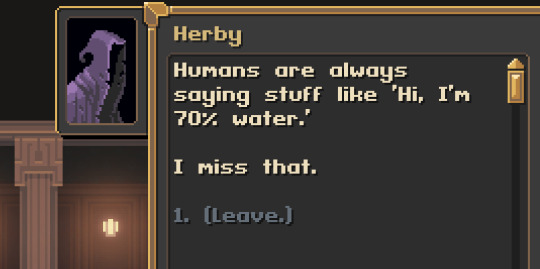
#gamedev#pixelart#gaming#rpg#pixel art#indiedev#witchmarsh#platformer#crpg#animation#writing#gameswriting#dialogue#screenwriting#cultists#lovecraft#lovecraftian
710 notes
·
View notes
Text
On Posture In Gubat Banwa
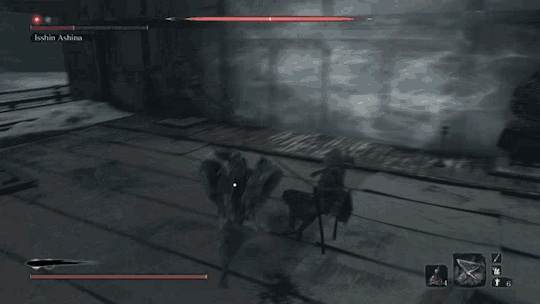
So the sixth version of Gubat Banwa's First Edition "returns" to the ideal that HP as a pacing mechanic, an Action Economy limiter, and a resource pressure. As always, in Tactical Combat games, resource management is a major aspect of the gameplay. Management of action economy, management of distance, management of other currency (such as Class-specific Resources). Most of a Tactical Combat Grid game revolves around the manipulation of these mechanics: reducing, regaining, adding, changing, force multiplication/division of these resources, and more. In Tomian Design (that is, Tom of LANCER RPG and ICON RPG), costing.

For the first 5 versions of Gubat Banwa's design, we worked with lower HP values (across the board) and with Dice Pools. The idea was that each dice in a dice pool was an attack launched, or a moment of concentration. Every die in the defense pool was a parry or evasion attempted. While the fantasy of that worked pretty great, the maths on the other hand did not. It worked almost counter-intuitively against the high-flying martial arts x deliberate tactical combat that I was trying to strike a balance for. My white elephant, my Shambhala, was to strike a good balance between that.
The Change
In 1.6, while the Dice Pool didn't entirely go away--much of the game is built around getting tactically advantageous positions so that you can get more dice and a higher chance of dealing greater damage on the target--it went for a more linearly scaling game with the result on the die reducing the target's Health.

It was a hit, mostly, among the inner circle (that is to say, my friends that I run the newer version for). There was an immediate sense of "we know how this game works" now.
On Tactical Video Games
It was more transparent--this information was crucial to making a tactical game work and sing. This is why in video games, almost every tactical game has the "Combat Forecast", like in Fire Emblem and Final Fantasy Tactics, that showcased the expected Hit Rate and the Damage Output.
This is absolutely integral: tactical games are decision point games. Without the proper information (doesn't need to be complete information), no decision can be done satisfyingly. This isn't to say that dice pools can't be used for a tactical game of course--I've done it. But it requires a different kind of design principle and design goal that Gubat Banwa wasn't going for. That sense of martial progression, of spiritual strength and eventual enlightenment.

From HP to POS
During the initial playtests, we were still working with HP. Hit Pearls. The idea was that every hit "shattered" a Hit Pearl. This worked with the Dice Pools, because the fiction was that every attack could be parried with Defense Dice.
What was the problem with this? Firstly, the math of this was inherently fraught, unfortunately: on higher levels, Defense Dice were either horribly impenetrable or did absolutely nothing to defend you. It became a binary thing. That was not the goal: for the martial fantasy to come to life, much of the decisions should not binary but rather, on a gradient spectrum.
To me, the destroyer of tactical grid games is when there's a single best strategy that shatters the tension of the game. My favorite parts of Final Fantasy Tactics and Tactics Ogre were early game moments where the output randomness could make every fight go completely different, even if you redid the same stage more than once.
Secondly, when the outcome of an action is that, really, nothing happened, you used an attack (even worse, the attack was buffed by yourself, an ally, and tactical modifiers) and then the target was able to parry all your hits. The fiction is exciting for a second, but then when you return to the battle grid, nothing changed. The mechanics fed into the fiction, but the fiction didn't feed into the mechanics.
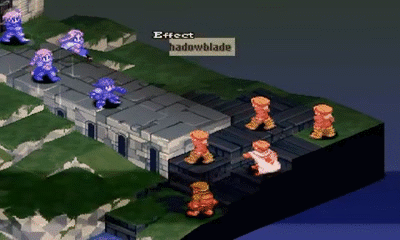
With the math change, the fiction of the Hit Pearls wasn't working because HP values were higher to compensate for the changed math. 12 Hit Pearls could feasibly be visualized as Link's Hearts, for example. But at 48 HP, that didn't work anymore.
Hearkening to the Ancients
So I actually went on a trip to older versions of Gubat Banwa, and found I'd solved that particular problem. Older versions of Gubat Banwa had HP as "Mettle", their ability to stay in the fight. Turning to the game's current version, I realized the Physical Defense stat was perfect: POSTURE. The stance, the guard, the ability to keep fighting, the ability to turn mortal wounds into grazing hits, the ability to ignore the effects of bleeding wounds, of burning pyres, of seeping poison.
Every attack was inflicting damage by chipping away at the target's guard, or forcing their stance into more compromised positions so that they would be open to an actual mortally wounding strike. They were still real hits that the defender was actively still guarding against. And with every attack defended, their guard wore down.
This hit me after watching Donnie Yen's SAKRA (2023) the other day. Reaching back into the high-flying wuxia roots, Donnie Yen's character doesn't even take real hits until after he's overwhelmed because he is such a martial superior against the rest of the Beggar Clan. Because his Posture was so high.

Ten Thousand Earth Shattering Blows
It worked great. Not to mention that it's a great reference to Sekiro, another huge inspiration to the games's intended fiction, which also had a Posture break. Now Staggered for half Posture or lower made sense: your guard is brittle! You court death! Now the Wide Open affliction felt more in genre: your guard is wide open, so you're suffering more!
The Physical Defense stat was renamed into PARRY, while the Magical Defense stat was kept as RESILIENCE (itself a reference to Final Fantasy Tactics A2!) The defenses were there to keep the mechanical bite of an Attack vs Defense interaction, to provide an avenue for another mechanical design space, as well as to shoe in the fact that when an attack targets your Parry you're physically blocking while an attack against your Resilience requires your fortitude and concentration to block against: when your Posture is reduced, when you guard is worn down by these attacks, you know how you were defending.

When enemies hit 0 POS, that attack is the one that gets through their Defenses and kills them outright. When a Kadungganan falls to 0 POS they're not dead, but they suffer a WOUND, which only heals on Downtime (as opposed to POS healing on Repose, ie., short rest).
On Defeat and Victory
While you're Defeated, you suffer the same effects of Stun, but you can still act and do things, even make attacks at full power: you're Kadungganan after all. But every attack against you, despite your PARRY or your RESILIENCE is not met with a stance ready to block. Thus, every instance of damage you suffer, no matter how much, inflicts another Wound. When you eat 5 Wounds, you can pull on your Conviction to stay alive. Otherwise, you are tossed back into the cycle of reincarnation, or into the river to Sulad, or to Lunar Heaven, or to whatever next life your Kadungganan has chosen to ascribe to.

Status Effects
Statuses such as Poisoned, Bleeding, or Aflame, don't break you yet because they must eat through your bodily resistance. But they are still real: an aflame Kadungganan fights on even as flames swathe their body.
They can die later, when they feel the effects of the burn when their POS falls to 0. They can die later, when the Poison finally seeps through and enervates them and destroys their defensive capability. They can die later, when the bleeding takes its toll and they can no longer keep their stance up.
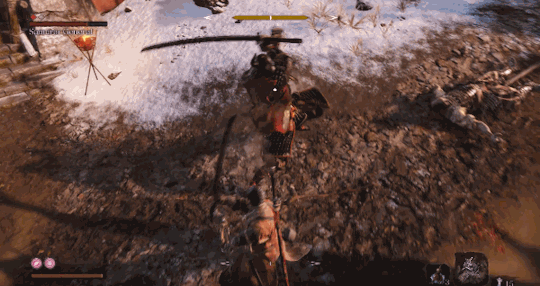
Martial Glossolalia
With a simple terminology change, the fiction changed entirely. Now everyone knew it was their defenses wearing down. Swords didn't cut off their fingers, flames didn't burn through their skin. They know that defenses are a holistic thing: your stamina, your constitution, your composure, your reactive ability, your dexterity, your presence of mind, your focus.
"It's not realistic!" The game is not meant to be realistic, and realism is not an inherent ontological good nor is it a goal for most TTRPGs, you will notice. Experiences, feelings. The fiction Gubat Banwa draws upon--SEAsian Folk Epics, Asian Martial Arts Cinema--is filled to the brim with the CLANG CLANG CLANG of sword-on-sword action. Often these clangs happen so quickly that you cannot process them, they are abstracted to you when it resolves in your brain--so is it abstracted by Gubat Banwa. Posture going down is the CLANG CLANG CLANG that resonates across a fight scene. It's not realistic because it's not meant to be, and even then, we must argue what your conception of reality is!
I could be argued that much of Tabletop RPGs (and, I would argue, most of games in general) is an exercise of language. Exploiting its vagaries, its ability to connect. When you go into Gubat Banwa, learning the mechanics of the game is learning a new language. And what is language but the foundation of culture?
310 notes
·
View notes
Text
The line-up for this year's LudoNarraCon has just been announced, and we're excited to finally be able to share with you all the (MANY) fun things we're doing as part of it!
I'm doing a fireside chat with Meredith Gran (Perfect Tides, Octopus Pie) where we talk for an hour about all things narrative design.
Abby and I are on a panel hosted by Patrick Klepek from remap about balancing the narrative directions of games with player choice. The other folks on the panel are Gareth Damian Martin (Citizen Sleeper) and Ben Gelinas (Times & Galaxy, also formerly Remedy (Control) and Bioware (ME3, DA:I))
You can find the details for these two events (and others, featuring other cool people) here: https://www.ludonarracon.com/2024-speakers
AT SOME POINT yet to be decided during LNC, Abby and I will be doing a retrospective livestream where we play through both the original demo for Slay the Princess as well as the first episode of Scarlet Hollow, answering some questions and talking about our writing and design process.
LudoNarraCon runs from May 9th to May 13th, and both Slay the Princess and Scarlet Hollow will be on sale for the event! Slay the Princess is also going to be featured and we'll be bringing back the demo on Steam for a limited time only.
101 notes
·
View notes
Text
i am basically sabotaging my personality and general tolerability these days unfortunately it's extremely fun
20 notes
·
View notes